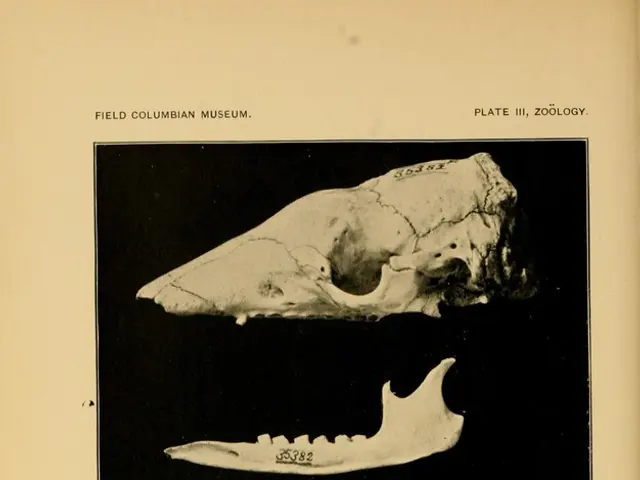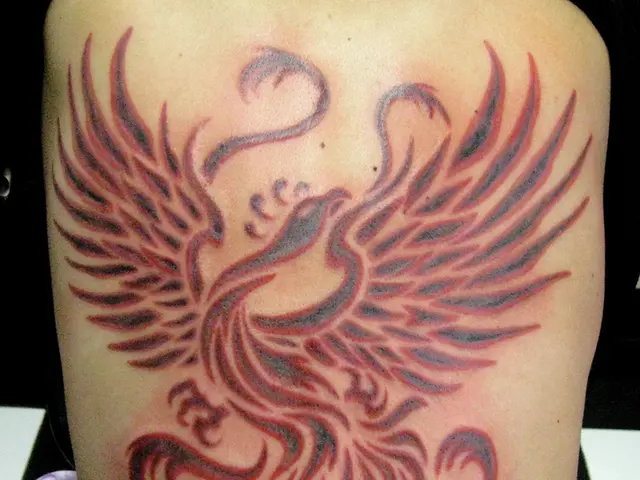Distinguishing Age Spots from Skin Cancer: Recognizing the Signs and Seeking Proper Medical Advice
Hey there! Let's dive into the world of skin health and distinguish between those pesky age spots and skin cancer.
Although they might look alike, it's crucial to know the differences because age spots are harmless while skin cancer isn't.
Age Spots
Age spots, also known as solar lentigines or liver spots, are those flat, dark patches that might pop up on your skin as you grow older. They're usually yellow, brown, or gray, and they've got clear borders that define them from the rest of your skin. These little guys tend to appear on areas of the skin that get exposed to the sun like the face, hands, shoulders, and arms.
Age spots are a result of your body producing an excess of a pigment called melanin to protect your skin from the sun's UV radiation, causing your skin to darken. They are more common on lighter skin, but they can appear on any skin tone. Generally, you'll start seeing them from middle age onwards.
Skin Cancer
Unlike age spots, skin cancer is a type of cancer that most likely grows in areas exposed to the sun. This happens because of damage caused by UV radiation from the sun or UV tanning beds.
Skin cancer occurs when UV radiation or other environmental or genetic factors damage the skin cells, causing them to mutate, grow, and spread at an accelerated rate. If left untreated, these conditions could potentially turn into cancer.
Skin cancer comes in three common types: basal cell carcinoma, squamous cell carcinoma, and melanoma. Another type that might be mistaken for an age spot is actinic keratosis, a precancerous growth caused by UV radiation damage.
Can Age Spots Turn into Cancer?
Age spots cannot turn into cancer, but actinic keratosis, which can appear similar to age spots, is a precancerous growth. If left untreated, it could potentially turn into skin cancer.
Symptoms and Diagnosis
The symptoms between age spots and skin cancer can vary, but there are ways to tell them apart. For instance, age spots are defined with clear borders, while skin cancer lesions can often have irregular borders.
It's essential to monitor any new or changing marks on your skin and seek medical attention if you notice potential signs of skin cancer or actinic keratosis. A doctor will perform a physical examination of the spot and assess its appearance, texture, and placement to determine whether it may be something other than an age spot. If necessary, they may perform a skin biopsy to test for other conditions like skin cancer or actinic keratosis.
Treatment
Age spots don't require treatment because they're harmless, but some people might choose to have them reduced for cosmetic reasons. Several options are available such as creams and lotions, or procedures like laser treatments, cryosurgery, microdermabrasion, and chemical peeling.
Treatments for skin cancer and actinic keratosis depend on various factors, including the type and stage of the disease, and a person's individual circumstances. If possible, a doctor will surgically remove basal cell and squamous cell cancers, but treatments can also include topical therapies, radiation therapy, chemotherapy, immunotherapy, and systemic medication.
In summary, while age spots might look like skin cancer, there are significant differences in appearance to help you determine what's going on with your skin. If you notice anything unusual, consult your doctor, as early diagnosis can make treatment easier and improve health outcomes.
- In the realm of dermatology, it's vital to discern between age spots and skin cancer, such as melanoma, which is a type of cancer that predominantly develops in areas exposed to the sun.
- Seniors might encounter age spots, also known as solar lentigines or liver spots, which are harmless and distinct from skin cancer due to their clear borders and flat, dark patches.
- Science has shown that these age spots form when the body produces an excess of melanin to protect skin from UV radiation, but skin cancer originates from damaged skin cells due to UV radiation or other factors, leading to uncontrolled growth and potential transformation into cancer.
- It's advisable to practice health-and-wellness by monitoring skin-care and reporting any new or changing marks to a medical professional for prompt diagnosis and treatment, as age spots and skin cancer can exhibit different symptoms and require diverse approaches to manage them.
- In oncology, treatment for age spots may involve cosmetic procedures, while skin cancer and actinic keratosis require specific treatments tailored to the type and stage of the condition, encompassing surgical removal, topical therapies, radiation therapy, chemotherapy, immunotherapy, and systemic medications.








